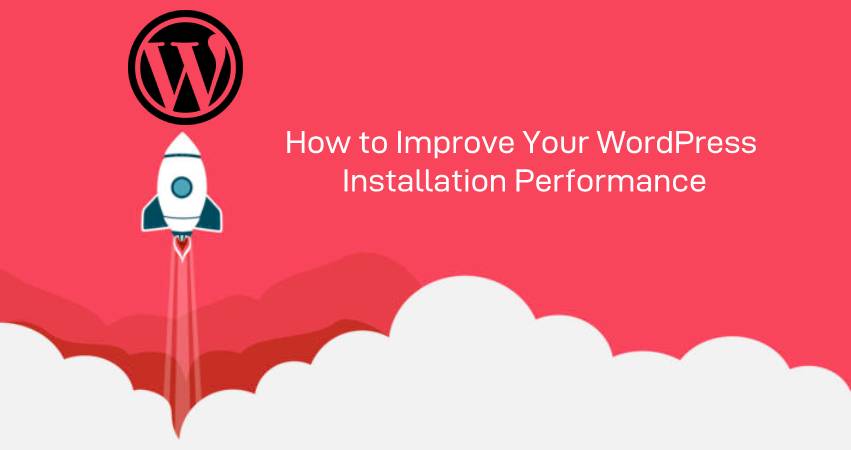Our Blog
6 Simple Ways To Improve Your WordPress Installation Performance

The numerous qualities of WordPress have made it the world’s premier website builder. It facilitates the creation of a website with efficient code and search-engine friendly features. However, it does not mean that your interface will perform at optimal levels at all times. It is essential that you take some steps to improve your WordPress installation performance. Speeding up your website is necessary for providing good user experience. It is increasingly seen that people do not like to wait for an interface to load. As mobile devices become more popular, this trend is growing even stronger. Moreover, search engines also use the loading speed as a ranking signal. Here are a few simple ways that you can use to boost your WordPress installation.
1. Choose A Reliable WordPress Hosting Service
The hosting service you pick for your interface can have a significant impact on its performance. Many people convert HTML website to WordPress or migrate from other formats. Such users usually, continue to subscribe to their old service provider that may be poorly aligned to fulfill the requirements of the new interface. Many of them also use shared plans that can negatively affect the performance of their website. This happens because their website has to share server resources with other entities that can get easily depleted during peak hours. It will be pertinent to invest in a dependable WordPress hosting service. These companies provide many helpful features like automatic updates and backup creation. They also provide vital security features like malware detection and firewalls.
2. Use Code Minification To Reduce The Bloat On Your Website
Most of you may not be aware that your website’s code can cause it to slow down. A computer program that seems efficient may contain a lot of unnecessary elements. The best way to remove these unwanted items without affecting the program is code minification. You can employ these techniques to remove spacing, comments, and variables from HTML, CSS, and JavaScript. Developers include spaces or comments for their own reference so that they can understand the context in which they added a line. However, these items are not needed during the execution of the program. Removing them reduces the bandwidth usage as well as the load time of your interface.
3. Remove Unused Items From Your Installation
Another helpful suggestion to improve your WordPress installation performance is to remove all unused items from it, at regular intervals. Themes and plugins are two of the most convenient features of the open-source CMS. However, if used in an unplanned way they can have a negative impact on your website. People add plugins whenever they require a new feature but they forget to uninstall them once the tools have served their purpose. A similar approach is adopted while using themes and media elements like pictures and videos. All these items that you do not need are only adding unnecessary load to your interface. Make it a habit to check your installation at regular intervals and audit themes and plugins, apart from all other elements. Then delete all the items that you think are not required.
4. Select A Simple And Efficient Theme For Your Website
Your choice of theme can have an effect on your website’s performance. It is natural for users to opt for an attractive template with multiple dynamic elements. However, it will be pertinent to think whether you really need all the features or not. The more the features, the more bandwidth resources your installation will consume. Identify your requirements and then select a simple theme with efficient code. In case, you need a feature-rich template, then it will be better to hire a WordPress expert who will customize it in an optimized manner.
5. Optimize Images And Do Not Upload Videos Directly
It is essential to have a website with visual appeal to attract and engage visitors. However, images and other media can easily low down an interface. All pictures must be optimized before uploading. There are plugins that can automate the entire process and reduce the file size without affecting the quality of the picture. Moreover, you must not directly upload video or audio files to your website. This will only result in increasing your bandwidth usage. Use third-party services like YouTube and Vimeo to host your videos and embed the URLs on your website.
6. Ensure Your Installation Is Using The Latest PHP Version
PHP is an important component of WordPress and you must ensure that your installation is using the latest PHP version. The 7.3 variant can help in boosting your website’s speed by 3 to 4 times. Every upgraded version contains security patches and bug fixes to counter recent threats. Upgrading your installation will also make it more secure. You can visit the Software section in your cPanel to know the version installed on your website and make the relevant changes.
Conclusion
We hope you find the ideas discussed here useful. In case, you face difficulties in implementing any of the tips presented here, then you can get in touch with expert WordPress coders at HireWPGeeks. The professionals at HireWPGeeks are experienced in handling all kinds of WordPress-related projects. It has a separate website maintenance wing that will help manage your installation and keep it in an optimized state.